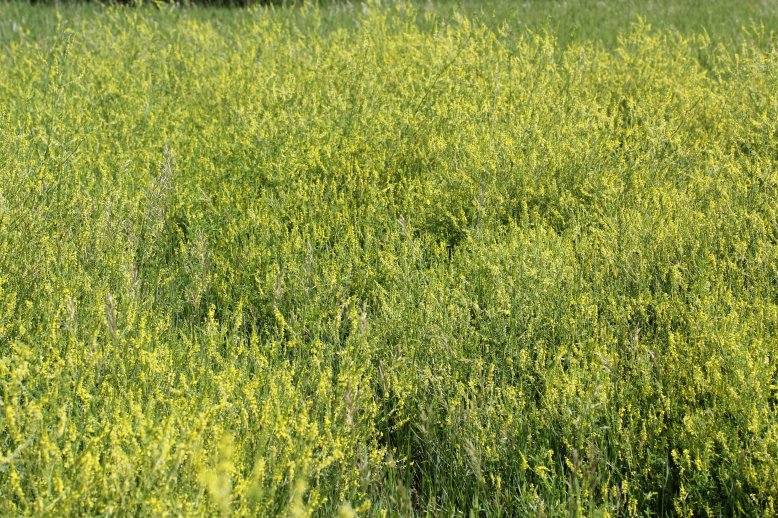
By Bruce Anderson, UNL Forage Specialist
Have you noticed an abundance of yellow sweet clover this summer? This can be good or bad, depending on how it may affect your pastures, your hay, and your cattle.
In many situations, I like sweet clover. Sweet clover is a legume and is able to produce its own nitrogen. In fact, sweet clover can provide more nitrogen for adjacent grasses than most other legumes. So your pastures might get a production boost following a heavy sweet clover year.
It also provides good quality grazing similar to alfalfa before plants bloom heavily. After blooming, though, like now, plants get stemmy and woody, reducing both feed value and palatability. Even young plants are quite bitter, so if other plants are available to graze, cattle eat only limited amounts of sweet clover. This greatly reduces bloat hazards, which is a risk when sweet clover is abundant.
Your biggest risk from sweet clover is in hay. Specifically, in moldy hay. Spoiled sweet clover produces a chemical called dicoumarin that interferes with metabolism and synthesis of vitamin K. Without vitamin K, blood will not clot properly after an injury and blood can even seep out of otherwise healthy blood vessels. That’s why sweet clover poisoning also is called sweet clover bleeding disease.
Make sure hay containing sweet clover is extra dry before baling or storing to prevent mold. And remember – mold can develop on perfectly dry bales if they get wet, so outdoor storage is risky. If you must feed moldy sweet clover, alternate by feeding moldy hay for a week followed by alfalfa or other non-moldy forage for a week. This intermittent feeding is safer than mixing good and moldy hay together.
Sound management will enable you to handle the bad with the good when sweet clover is abundant.